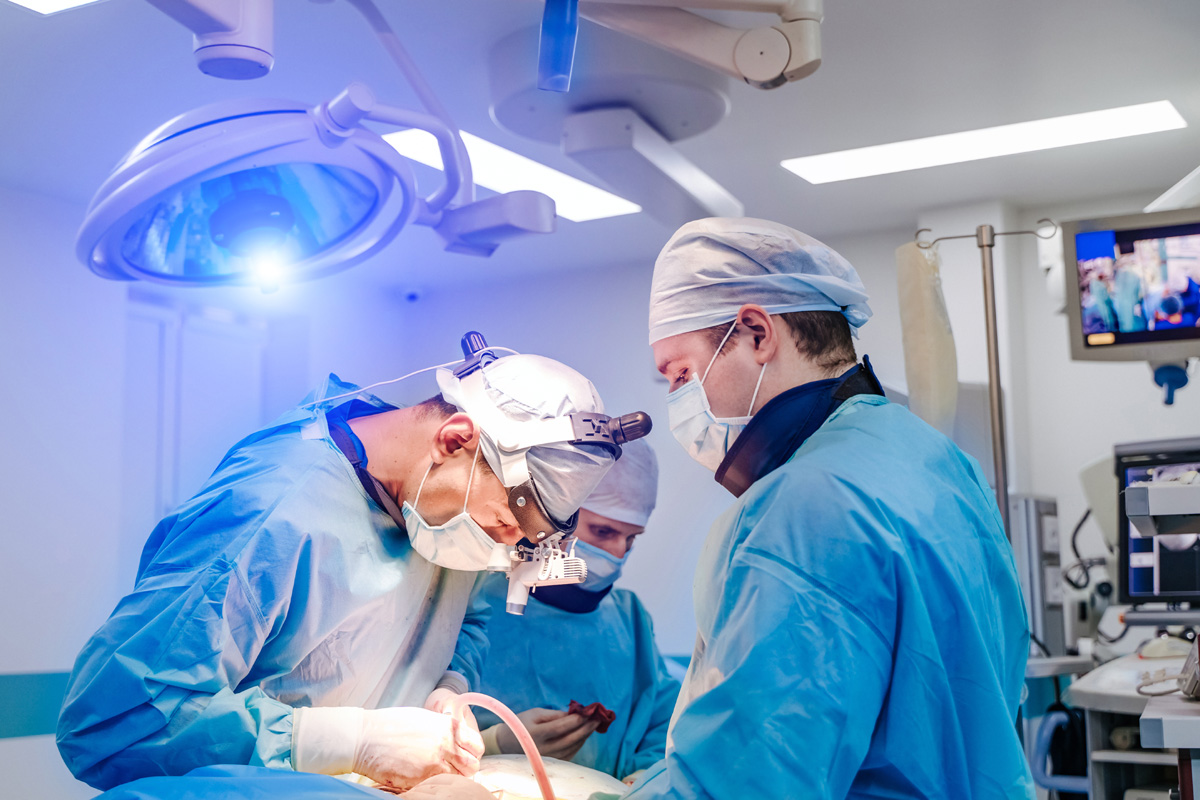Enhancements in Anterior Cervical Corpectomy and Fusion (ACCF) spine surgery results can be achieved via meticulous preoperative planning, personalized surgical approaches, and cutting-edge, minimally invasive techniques. Post-operative care and rehabilitation considerations are crucial, as is attention to a patient’s overall health, nutrition, and mental wellbeing. Technological innovations, such as robotic assistance, and developments in bio-engineering show promise in further improving outcomes. Delving further into these elements offers potential insights into optimizing ACCF surgery results.
Understanding ACCF Spine Surgery
The Anterior Cervical Corpectomy and Fusion (ACCF) spine surgery is a clinical procedure aimed at alleviating pain and improving function by removing one or more intervertebral discs and vertebral bodies from the neck area. This procedure is typically performed to address conditions like spinal stenosis, herniated discs, or degenerative disc disease.
Like any surgical procedure, ACCF carries some risks. These include infection, nerve damage, bleeding, and complications related to anesthesia. Moreover, there’s the risk of non-union, where the bone fails to heal properly after the surgery. It’s essential that patients are fully aware of these potential risks before opting for the procedure.
The recovery timeline for ACCF varies depending on several factors, including the patient’s overall health and the extent of the surgical procedure. Typically, patients are discharged from the hospital within a few days post-surgery. Full recovery, however, can take several months, during which physical therapy may be recommended to restore strength and mobility to the neck area. Patients are usually able to return to light activities within a few weeks and gradually resume more strenuous tasks as they continue to heal.
The Role of Preoperative Planning
In the domain of ACCF spine surgery, preoperative planning plays a pivotal role in ensuring best results and minimizing potential risks. This phase of surgery involves thorough risk assessment and exploration of surgical alternatives to tailor the procedure to the patient’s unique medical circumstances.
Risk assessment is an integral component of preoperative planning. It encompasses a detailed evaluation of the patient’s health status, including pre-existing conditions, lifestyle factors, and potential complications. This process helps surgeons predict possible outcomes and prepare for any contingencies. It also aids in patient education, as they are informed about the risks and benefits of the procedure, enabling them to make informed decisions.
In addition to risk assessment, consideration of surgical alternatives is also a significant aspect of preoperative planning. By analyzing different surgical approaches, surgeons can choose the most suitable method that will yield best results while minimizing the risk for the patient. This also allows for a more personalized approach to surgery, enhancing patient satisfaction and recovery outcomes.
Advancements in Surgical Techniques
The evolution of surgical techniques in Anterior Cervical Corpectomy and Fusion (ACCF) has greatly improved patient outcomes. The rise of modern methods and technological innovations in ACCF surgery have paved the way for safer and more efficient procedures. This segment will focus on these advancements and their role in enhancing ACCF spine surgery results.
Modern ACCF Surgical Methods
Advancements in surgical techniques have greatly enhanced the outcomes of Anterior Cervical Corpectomy and Fusion (ACCF) procedures. Modern ACCF surgical methods focus on mitigating ACCF risk factors, improving patient recovery rates and long-term health. Importantly, an emphasis on posture correction has been instrumental in augmenting results, allowing patients to regain normal mobility and reduce discomfort more efficiently. These advancements have addressed the challenge of post-surgery complications, such as spinal instability and nerve damage. Through careful pre-operative planning and precise execution of the surgical procedure, surgeons can now better manage these risk factors, notably improving patient prognosis. Integrating these modern techniques into ACCF procedures has undeniably marked a significant milestone in spinal surgery.
Technological Innovations in ACCF
Pioneering the forefront of ACCF procedures, technological innovations have immensely contributed to the evolution of surgical techniques, enhancing both the precision and efficacy of spine surgeries. Robotic assistance, a significant leap in the medical field, has been instrumental in minimizing ACCF complications and improving overall patient outcomes.
- Robotic assistance provides unprecedented precision, increasing the success rate of complex spine surgeries.
- Technological advancements have led to improved diagnostic tools that allow for earlier detection and treatment of spinal conditions, dramatically reducing potential ACCF complications.
- The advent of minimally invasive surgery has transformed the ACCF landscape, offering patients quicker recovery times and less postoperative discomfort.
Such progressive strides highlight the promise of technology in advancing ACCF surgical techniques.
Importance of Patients Overall Health
In the domain of ACCF spine surgery, a patient’s overall health plays a pivotal role in determining surgical outcomes and recovery speed. This is because the body’s resilience and ability to heal post-surgery is greatly impacted by the overall health status of the patient.
Lifestyle modifications are a key aspect that can influence a patient’s overall health. Regular physical activities, smoking cessation, and maintaining a healthy weight are all critical aspects that contribute to a patient’s overall health and wellbeing, hence potentially enhancing the results of ACCF spine surgery.
Stress management is another important factor that can impact a patient’s health. Chronic stress can lead to a weakened immune system, which can slow the healing process and increase the risk of complications after surgery. As such, implementing stress management techniques such as regular exercise, deep breathing, and mindfulness can improve a patient’s overall health and potentially lead to better surgical outcomes.
Proper Nourishment and Hydration
The role of proper nourishment and hydration in the recovery process post-ACCF Spine Surgery cannot be underestimated. The intake of essential nutrients aids the body’s healing process, restoring strength and essential to the patient. Similarly, hydration plays a pivotal role in facilitating healing, maintaining cellular function, and promoting overall well-being during recovery.
Essential Nutrients for Recovery
Adequate nourishment and hydration, replete with essential nutrients, play an integral role in the recovery process following an Anterior Cervical Corpectomy and Fusion (ACCF) spine surgery.
The importance of proper supplement intake cannot be overstated. Here are a few key considerations:
1. Protein supplements can aid in wound care and tissue regeneration, crucial for prompt healing.
2. Vitamin C and Zinc supplements are essential for collagen production, further enhancing wound recovery.
3. Calcium and Vitamin D are vital for bone health, a crucial aspect of recovery post-ACCF.
Incorporating these nutrients in the right amounts can significantly boost the healing process. Proper nutrition, paired with adequate hydration, sets the stage for a successful, smoother recovery following ACCF.
Hydrations Role in Healing
While supplement intake forms one part of the recovery equation, proper hydration stands as an equally important pillar, instrumental in facilitating best healing post-ACCF surgery. Hydration benefits the body by promoting efficient nutrient distribution, enhancing oxygen delivery to tissues, and maintaining ideal body temperature. These functions are critical in the healing process, particularly after an invasive procedure like ACCF. Adequate water intake also aids in flushing out toxins and waste materials, which can accelerate recovery times and reduce inflammation. It is vital for patients to understand that maintaining good hydration levels is not just about drinking more water. It involves balancing fluid levels with electrolytes to ensure ideal bodily functions. Therefore, proper hydration is indispensable in improving outcomes after ACCF surgery.
Physical Conditioning Prior to Surgery
Prior to undergoing ACCF spine surgery, it proves beneficial for patients to engage in targeted physical conditioning to enhance postoperative outcomes. This preparatory phase is an opportunity for patients to manage surgery anxiety and implement necessary pre-surgery lifestyle changes.
Physical conditioning focuses on three primary aspects:
- Strengthening Core Muscles: Developing a strong core can enhance balance and stability, reducing the risk of falls and injuries post-surgery.
- Improving Flexibility: Flexibility exercises can aid in maintaining normal joint function, reducing the stiffness and discomfort that often follows surgery.
- Boosting Cardiovascular Health: Regular aerobic exercises can improve heart health, increasing the body’s ability to handle the stress of surgery and accelerating the recovery process post-surgery.
Anxiety management techniques such as deep breathing exercises, visualization, and progressive muscle relaxation can be incorporated into the conditioning routine. This holistic approach not only prepares the body physically but also fortifies the mind, reducing anxiety and promoting a positive outlook towards the surgery. Pre-surgery lifestyle changes, such as maintaining a balanced diet, quitting smoking, and reducing alcohol intake, further guarantee favorable surgical outcomes. These preparatory measures greatly enhance a patient’s ability to withstand the rigours of ACCF spine surgery and recover successfully.
Minimally Invasive ACCF Approaches
Moving on from the topic of pre-surgical physical conditioning, we now turn our attention to the minimally invasive approaches in Anterior Cervical Corpectomy and Fusion (ACCF). This discussion will cover the benefits of these less intrusive techniques in ACCF procedures, as well as an overview of the specific surgical methods employed. The goal is to provide a thorough understanding of how these advances contribute to improved spine surgery outcomes.
Benefits of Minimally Invasive ACCF
In the domain of spinal surgery, minimally invasive ACCF approaches offer numerous advantages, ranging from reduced surgical trauma to faster post-operative recovery. Here are three key benefits:
- ACCF Cost Effectiveness: Minimally invasive ACCF procedures often result in shorter hospital stays and fewer resources expended, leading to overall cost savings.
- Reduced Complication Rates: ACCF complication rates are typically lower with minimally invasive techniques, reducing patient risk and enhancing recovery prospects.
- Accelerated Recovery: Less tissue damage during surgery often translates into quicker patient recuperation, allowing a return to normal activities sooner.
These benefits not only enhance patient outcomes but also contribute to the ongoing improvement and refinement of spinal surgical techniques.
Surgical Techniques in ACCF
Having outlined the benefits of minimally invasive ACCF, it seems appropriate to now examine the specific surgical techniques used in these procedures. The key objective is to manage any potential ACCF complications and guarantee patient’s pain relief. This is achieved through a combination of careful surgical planning, precision during the procedure, and postoperative care. Technological advancements have enabled surgeons to access the cervical spine through smaller incisions, reducing muscle disruption and facilitating a quicker recovery. Real-time imaging guides the removal of disc material and osteophytes, while also making sure the accurate placement of the cage and bone graft. Postoperatively, pain management strategies are employed to optimize patient comfort and promote healing. These techniques collectively enhance the outcomes of ACCF surgeries.
Post-Operative Care Essentials
Critical attention to post-operative care plays a paramount role in enhancing the success rate of ACCF spine surgery. It is a multi-faceted process that requires careful implementation, particularly in the areas of pain management strategies and wound care importance.
- Pain Management Strategies: Effective pain control post-surgery accelerates patient recovery and improves their quality of life. Utilizing a combination of pharmacological interventions, nerve block techniques, and patient education on pain self-management, can markedly lessen patient discomfort.
- Wound Care Importance: Prompt and proficient wound care is essential to prevent infection and promote healing. This includes regular cleaning, appropriate dressing changes, and monitoring for signs of complications such as redness, swelling, or discharge.
- Follow-Up Evaluations: Regular check-ups allow healthcare professionals to assess the patient’s progress, detect any potential issues promptly, and make necessary adjustments to the care plan.
Role of Rehabilitation in Recovery
Rehabilitation plays an indispensable role in the recovery phase of ACCF spine surgery, aiming to restore function, improve mobility, and enhance the patient’s overall quality of life. This process, however, is not devoid of challenges.
Rehabilitation challenges often include managing pain, retraining muscles, and relearning basic movements. These hurdles require a tailored rehabilitative approach, taking into account the patient’s individual condition and progress post-surgery. Despite these difficulties, continuous efforts in rehabilitation can lead to significant improvements in the patient’s functionality and independence.
Innovative therapies are increasingly being used to address these rehabilitation challenges. These therapies, which include techniques such as virtual reality and biofeedback, offer novel ways to stimulate and engage the patient during recovery. By utilizing advanced technology, these innovative therapies can facilitate faster and more effective rehabilitation.
Mental Healths Impact on Recovery
Certainly, the patient’s mental health frequently plays a pivotal role in the recovery process following ACCF spine surgery. The psychological state of a patient, often overlooked, is integral in determining the effectiveness of surgical outcomes. Emotional preparedness and stress management are two important factors that can shape a patient’s journey to recovery.
- Emotional Preparedness: Being mentally prepared for surgery and the subsequent recovery can greatly reduce anxiety and promote a positive outlook, which are vital for healing and rehabilitation. Patients with high emotional preparedness often exhibit improved pain tolerance and quicker recovery times.
- Stress Management: High stress levels can hinder the recovery process by triggering inflammation and prolonging the healing period. Effective stress management techniques, such as deep breathing and meditation, can expedite recovery by maintaining a relaxed state.
- Support Systems: The presence of a strong support system, whether it be family, friends, or mental health professionals, can provide emotional stability and aid in the recovery process.
Future Developments in ACCF Surgery
Looking towards the horizon of medical advancements, there are several promising developments in the field of Anterior Cervical Corpectomy and Fusion (ACCF) surgery that aim to enhance results and improve patient recovery times.
One such development is the use of robotic assistance. Robotic technology is increasingly being incorporated into surgical procedures, providing surgeons with a high degree of precision. In ACCF surgery, this technology can be instrumental in overcoming some of the ACCF limitations, such as reducing the risk of human error and enhancing the surgeon’s ability to navigate complex anatomical structures.
Additionally, robotics can help shorten the recovery period by minimizing tissue trauma during surgery. This results in fewer complications, less post-operative pain, and a quicker return to normal activities for the patient.
Moreover, advancements in bio-engineering are expected to improve the materials used in spinal fusion, potentially leading to better integration with the body and improved long-term outcomes.
Frequently Asked Questions
Are There Any Potential Side Effects or Risks Associated With ACCF Surgery Enhancements?
Potential side effects from ACCF surgery enhancements may vary, depending on the specific techniques used. However, the effectiveness of these enhancement techniques and the importance of post-operative care can greatly mitigate these risks.
How Are the Costs of the ACCF Surgery and Its Enhancements Covered by Insurance?
Insurance coverage for ACCF surgery and enhancements largely depends on individual insurance policies variations. Typically, pre-authorization requirements must be met, including demonstrating medical necessity, to secure coverage for these procedures.
How Long Does It Typically Take to Recover Fully From ACCF Surgery With the Mentioned Enhancements?
Recovery from ACCF surgery varies among individuals. Post surgery lifestyle changes and enhanced recovery techniques typically reduce the recovery period to approximately 3-6 months, allowing patients to resume normal activities.
Are There Any Specific Age or Weight Restrictions for Patients Considering ACCF Surgery With These Enhancements?
Enhancement suitability for ACCF surgery varies, however, specific age or weight restrictions are not typically imposed. Pre-surgery preparations are vital and individual health assessments ascertain the patient’s readiness for surgical enhancements.
How Does the Success Rate of ACCF Surgery Compare to Other Types of Spine Surgeries?
ACCF surgery often yields superior results compared to other spine surgery alternatives due to its focused approach. Post ACCF lifestyle changes further enhance recovery and long-term success, solidifying its standing in spinal treatment procedures.



